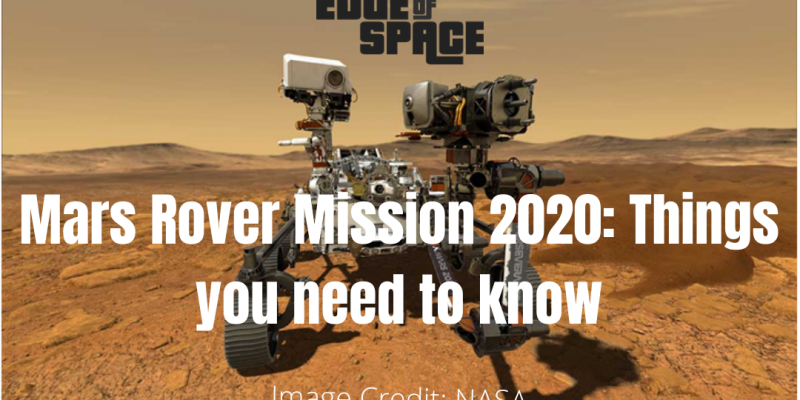
2:31 a.m. Feb 19, 2021, a tweet by NASA’s Perseverance Mars Rover, “Hello, world. My first look at my forever home.” NASA and the world celebrated the success of the landing of Mars Rover “Perseverance” on the Mars’ landing site called Jezero Crater, one of the eight potential locations to explore Martian life.
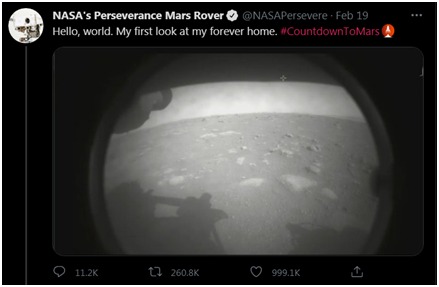
Image Credits: twitter.com
One of the missions is to “search for ancient life by collecting rock samples and sending them back to the Earth.” The rover is itself a mini-scientific laboratory on Mars to collect thirty-eight rock samples, and testing experiments for various purposes include –
- Production of oxygen from the Martian atmosphere, which is ninety-six percent of carbon dioxide.
- Look for other useful resources, weather & seasonal conditions, and environmental conditions.
Well, these above two points are just a broad overview of what will the rover going to do at Mars. Let’s take a look at the details of the mission.
Mission Mars 2020: Overview
“The question of whether there’s a life beyond Earth is one of the most fundamental and essential questions we can ask.” – NASA Geologist Katie Stack Morgan – the Mission Mars 2020 is all about finding answers to these fundamental questions.
As mentioned earlier, the rover will search for traces of the ancient life on Mars, which will eventually help NASA to plan and carry out future missions. These future missions will help us to take a few steps forward to achieve interplanetary life at Mars. You might be wondering how this robotic device will be helpful?
Perseverance, the Mars rover, is equipped with highly sophisticated technological payload instruments that will collect the information. It is a scientific toolkit in itself, which will explore Jezero Crater and perform some demonstration tests that will include,
- Technology for the extraction of oxygen from the Martian atmosphere: Mars’ Atmosphere is 96% of carbon dioxide. So, we need technologies or ways to extract a sufficient amount of oxygen from the naturally available resources to support human life.
- Testing weather conditions and amount of dust: It will play a key role in understanding the seasonal changes of Mars and predicting future weather conditions. Thus, it will help in supporting human life there.
The mission also includes the ‘Astrobilogical’ aspects that will look for the existence of the ancient microbial life, thus, giving us a better picture of the chances of establishing a ‘space colony’ on Mars. This astrobiological aspect will also analyze the climatic conditions and geology. One of the unique things it will going to do is, “collect rock samples and return them to Earth”, which makes it the first rover in the history of mankind to do that.
But, how it will catch the sample? How it will reach the scientists? You will appreciate the technological implementation and efforts of NASA they have put into this mission. The three robotic components as parts of the rover’s sample catching system will work in a specific set of instructions. The river will use a drill to dig into the surface and collect core samples of rocks and regolith, storing them in sealed tubes, and deposit them on the surface, which will be further retrieved as a part of a future mission.
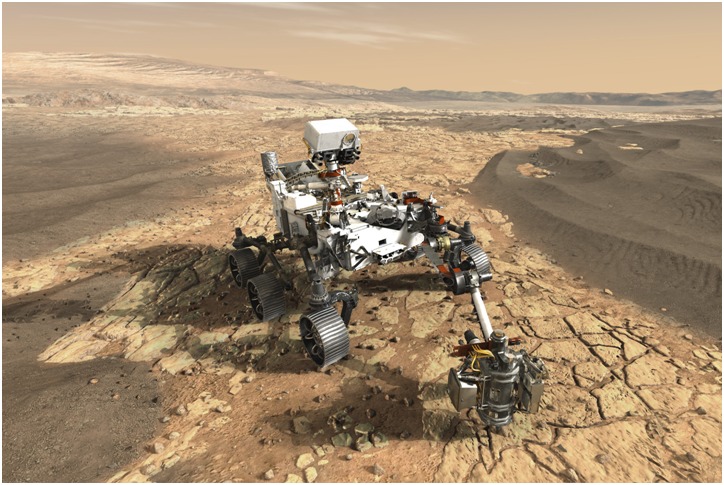
Image Credits: Geekwire.com
The rover will analyze the images of the Martian surface, collecting the important data, and that data will be used by NASA for further research. For that, the rover is equipped with 19 cameras (excluding the cameras of the overall Mars 2020 spacecraft that holds 23 cameras in total) that will send the images of the landscape with essential morphological and geological details.
Not only the images, but the rover is also capable enough to record the sounds of Mars’ surroundings, which is another interesting thing of the mission. The rover has two microphones, out of which, one recorded the sounds of Landing on Mars for the first time, and the other will be recording the sounds of winds and friction between land and the instrument’s laser zaps. These sounds are worth helpful in understanding the properties of the rocks, including their hardness, and frequency of the winds.
You can listen to the sounds from here: https://www.youtube.com/watch?v=ZBFjpnV9-sg
Another special element of the mission, which is a technological demonstration is the “Ingenuity: the Mars Helicopter”. For the first time ever, a test flight will be demonstrated on Mars. Attached in the belly of the rover under a shield for protection against heat during Entry, Descent, and Landing (EDL), it will be released at a suitable location in a few steps:
- Dropping Debris Shield
- Unlocking Release System
- Unlocking Landing Legs
- Dropping Helicopter to surface
In this way, this special powered flight will be demonstrated.
Now, let me introduce you to the robotic-scientific toolkit of Mars, the rover ‘Perseverance’.
Perseverance Rover: A scientific toolkit in Mars
Perseverance is not the only rover to reach Mars, but it’s the first of its kind due to the sophisticated and complete technological demonstrator that will be helping NASA to built future technologies to support human life at Mars. The rover, launched on July 30th, 2020, landed at Jezero Crater on February 18th, 2021, will spend at least one Mars year (682 Earth days), and explore the Martian geology with a set of technological demonstrations.
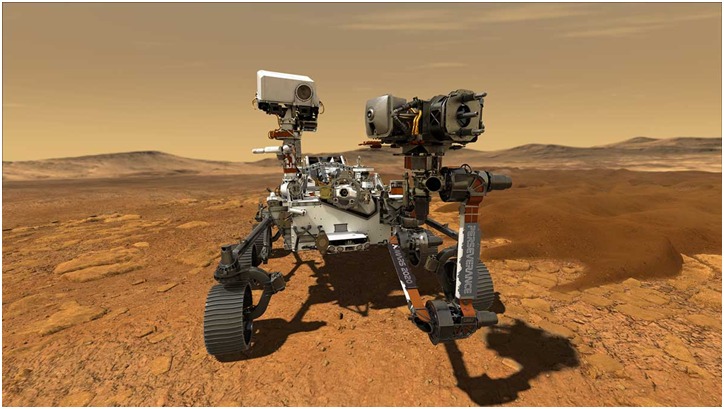
Image Credits: NASA
Derived from Curiosity and other rovers, it is a six-wheeler that helps to maintain the overall weight of the rover. It is more-or-less similar to the Curiosity one with some advancements. One of the additions on the perseverance is the ‘Vision Computer Element: third brain of Perseverance’. Curiosity had two brains for their functions, but Perseverance is equipped with the third one as a special card to analyze images.
This special card features a Virtex – 5 Field Programmable Gate Array (FPGA) as a part of Terrain – Relative Navigation (a technology for successful EDL of the rover) and Lander Vision System (LVS). LVS is also a part of the Terrain – Relative Navigation to operate the spacecraft at a height of 1.4 – 2.6 miles above the ground, determining the rover’s position and different navigation conditions.
Here, the Vision Computer Element has a vital role in analyzing the images of the landing site during descent, and to determine the rover’s position with the LVS system while landing. After landing, it would be reprogrammed for image analysis of the terrain for efficient and independent navigation of the rover.
We already had a discussion brief about the technology of the sample catching system. Let’s take it a step forward here. The sample catching system will use three robotic arms for drilling. The first rover arm, which is a 7-foot-long robotic arm with a drill and laden turret (instrument). It is a five-joint arm to be manipulated to place the turret close to the desired geological location.
Then the turret, which contains a rotatory device will use two modes for sample collection, drill and percussive mode according to the need. Then the collected sample is stored in sealed tubes, which are placed in the second robot of the system, called Bit Carousel. It then transfers the sample to the third robotic component called the adaptive assembly, which consists of the sample handling arm, sample tube assemblies, tube seals, and stations for a variety of activities. This is how the catching system works.
The payload instruments of the rover include:
- Mastcam-Z: It is the eyes of the rover, which will be an assistant to the rover to carry out further operations.
- Mars Environmental Dynamics Analyzer (MEDA): It is a set of sensors to provide data for analyzing environmental conditions by measuring temperature, pressure, etc.
- Mars Oxygen In-Situ Resource Utilization Experiment (MOXIE): It is a technological demonstration that will produce oxygen from the Martian atmosphere.
- Planetary Instrument for X-ray Lithochemistry (PIXL): It is an X-ray fluorescence spectrometer with an imager to image the fine-scale elemental composition of materials.
- Radar Imager for Mars’ Subsurface Experiment (RIMFAX): It is a ground-penetrating radar to provide centimeter-scale resolution of the geologic structure of the subsurface.
- Scanning Habitable Environments with Raman & Luminescence for Organics & Chemicals (SHERLOC): It is a UV spectrometer with an imager to provide the fine-scale elemental composition of materials.
- SuperCam
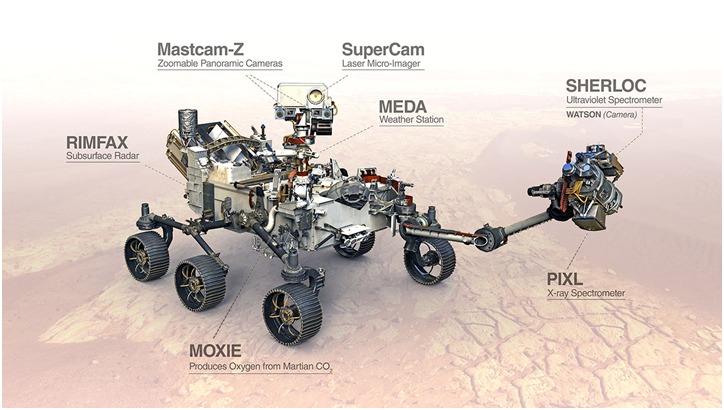
Image Credits: NASA
The rover is also equipped with highly advanced technologies such as Mars Science Laboratory Entry, Descent, and Landing Instrumentation 2 (MEDLI 2) and Ingenuity Mars Helicopter. MEDLI 2 is an advanced version of a technology called Mars Science Laboratory (MSL) of the Curiosity rover. It basically collects the thermodynamic data such as temperature, pressure, and heating on the shields during EDL. This data will further be used for developing future systems for EDL. While Ingenuity is Mars Helicopter that will be performing a powered test – flight on the mars, and it will be the first time of its own demonstration.
Landing: “Seven minutes of terror”
NASA’s Mars 2020 spacecraft, launched on July 30th, 2020 from Cape Canaveral, Florida, aimed to reach Mars after seven months with the help of Celestial Mechanics. The phase included the launch, cruise stage, EDL (Entry, Descent, and Landing), and operations at the surface.
At an altitude of 12,100 mph or 19,500 kph, the spacecraft reached the top of the atmosphere where the pace of Entry, Descent, and Landing began, and after seven minutes, the rover landed on Mars. But, this is not the only reason that the landing is called “seven minutes of terror”. Another reason being the reach of the signal from Mars to Earth or vice versa. The signal takes 11 minutes to reach from one location to another, and it was a thing of concern at that moment.
The whole spacecraft, which has Cruise Stage, Descent Stage, Back Shell, Heat Shield, and Rover used the technology called Terrian – Relative Navigation (TRN) system with a key feature that allows the rover to protect itself from hazardous terrain with diversion and guided entry in the atmosphere. A microphone is also present which allowed the operators or engineers to analyze the entry, descent, and landing.
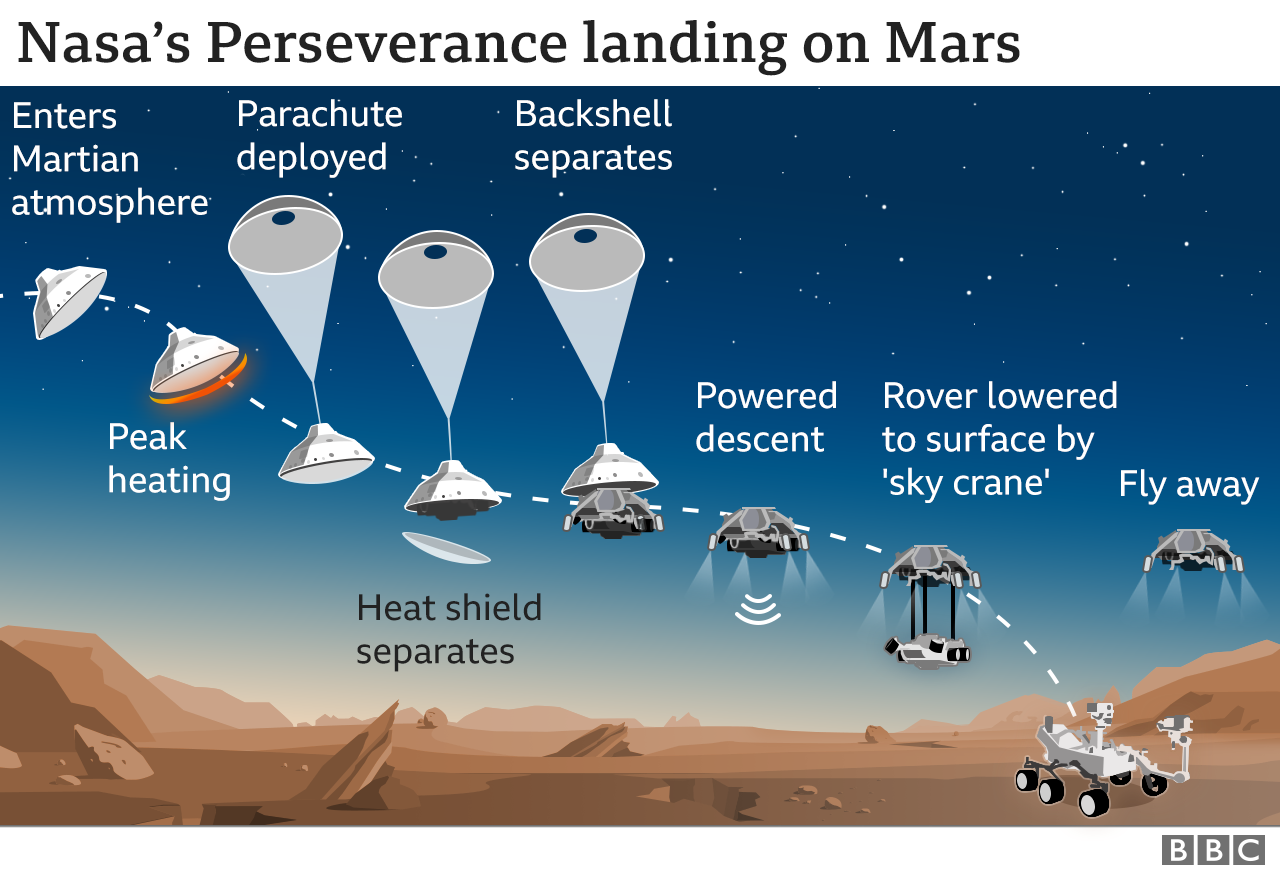
Image credits: BBC
Guided entry included the adjustment of the angles, which diverted the direction of the spacecraft with the help of small thrusters. During the descent, high heating occurred, but the spacecraft contained heat shields for protection. Three minutes after this, Range trigger was a technique used to deploy the parachute according to the navigate position. After the parachute deployment, the heat shields were removed, and Terrain–Relative Navigation technology was used to figure out the spacecraft’s location and selects the landing site.
This rover will provide us with a good amount of breathtaking information about Mars. For now, the rover shared some astonishing pictures of the landing sites, 360 degrees panorama, and amazing sounds of the Martian winds. It will be amazing to witness the future information the rover will share.
Further reading: Landing Press kit by NASA
Author


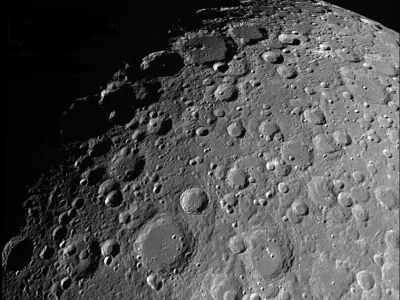



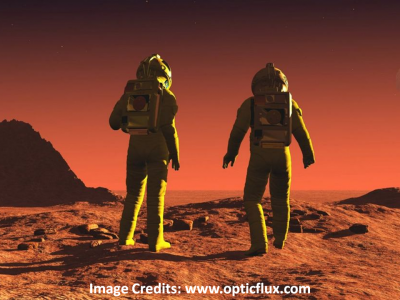


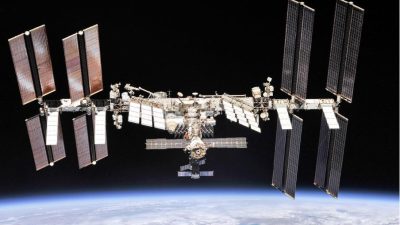



[…] Suggested Reading: Mars Rover Mission 2020: Things you need to know […]